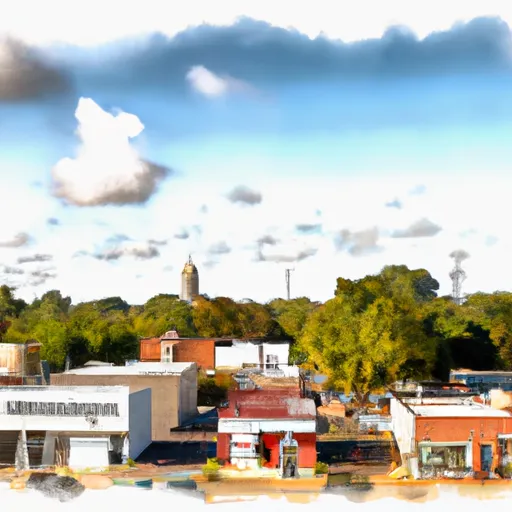°F
°F
mph
Windspeed
%
Humidity











Saltillo, Mississippi is a small town located in Lee County. It experiences a humid subtropical climate, characterized by hot and humid summers and mild winters. Summers are typically hot with temperatures often reaching the high 90s Fahrenheit, while winters are generally mild with temperatures seldom dropping below freezing. Precipitation is evenly distributed throughout the year, with frequent rain showers and occasional thunderstorms.
Hydrologically, Saltillo is situated near the headwaters of the Tombigbee River, which serves as an important water source for the region. Numerous creeks and streams also flow through the area, adding to the town's hydrological landscape.
Outdoor enthusiasts can enjoy various recreational opportunities in Saltillo and its surroundings. The Natchez Trace Parkway is a popular destination for hiking, biking, and bird-watching. The nearby Tombigbee National Forest offers opportunities for camping, fishing, and wildlife viewing. Additionally, the Trace State Park, located just south of Saltillo, provides opportunities for boating, fishing, and picnicking. With its diverse natural landscapes and abundance of outdoor activities, Saltillo is an attractive destination for nature lovers and adventurers alike.
Weather Forecast
Saltillo receives approximately 1447mm of rain per year, with humidity levels near 86% and air temperatures averaging around 17°C. Saltillo has a plant hardyness factor of 7, meaning plants and agriculture in this region tend to thrive during the non-winter months.
Regional Streamflow Levels
164
Cubic Feet Per Second
6,680
Cubic Feet Per Second
17,600
Cubic Feet Per Second
2,950
Cubic Feet Per Second
Nearby Camping
| Camping Area | Reservations | Toilets | Showers |
|---|---|---|---|
| Turkey Fork Rec. Area | |||
| Archusa Creek Waterpark | |||
| Clarkco State Park | |||
| Lake Tom Bailey | |||
| Dunns Falls Water Park | |||
| Gulf Marine State Park |



